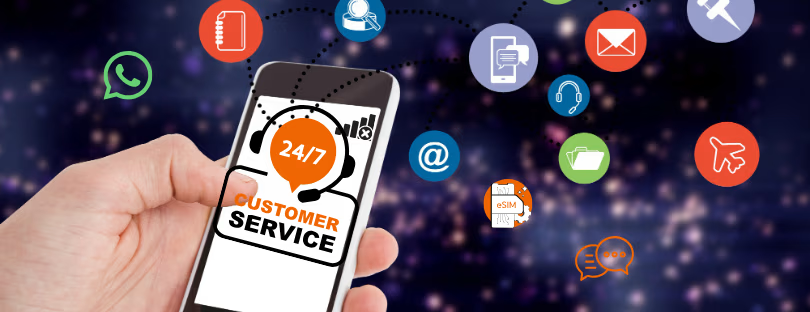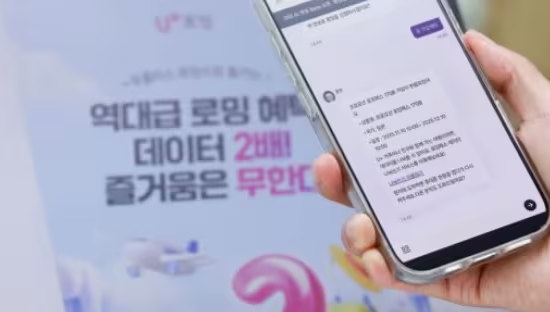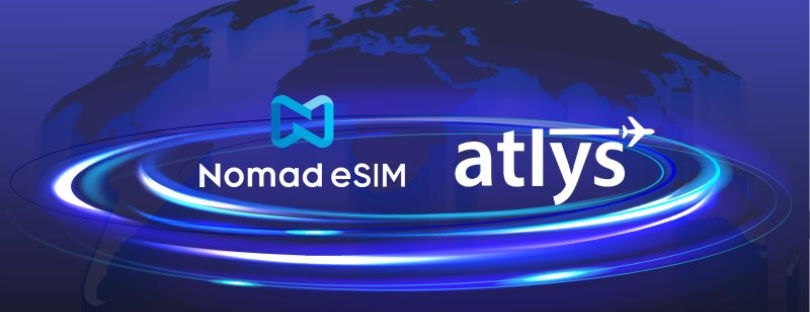
The Great eSIM Support Test: Who Responds, Who Cares, and Who Ghosts You?
When your internet suddenly stops working while you’re navigating an unfamiliar city, waiting hours (or days) for help isn’t just inconvenient—it’s maddening. That’s why we decided to put the eSIM industry to the test. We tested over 100 eSIM providers worldwide, all with the same, simple problem. The mission: to find out who actually responds, who cares, and who disappears behind an auto-reply.
What followed was a fascinating deep dive into the customer support culture of one of travel tech’s fastest-growing sectors. From instant human replies to ghosted chats and invalid WhatsApp numbers, the results tell us a lot about where the eSIM industry stands—and what still needs fixing.
The eSIM Market: Fast Growth, Uneven Experience
The eSIM industry has exploded over the past three years. According to Juniper Research, the number of eSIM connections will exceed 3.4 billion by 2025, driven by travel, IoT, and mobile devices that no longer rely on plastic SIMs. But while providers have mastered technology—data bundles, global plans, QR activation—the support layer still feels like the wild west.
There’s no universal standard for customer service. Some eSIM sellers are established telecom subsidiaries (like Ubigi or GoMoWorld), while others are small tech startups or affiliate resellers working across multiple platforms. The result? An enormous gap in response times, communication tools, and overall reliability.
Why This Actually Matters (More Than Pricing)
Because when things go wrong abroad, support is the real product.
- Nobody cares if your eSIM was €2 cheaper—if it won’t activate in Dubai airport and no one answers your messages.
- Traditional telecom operators? You call them while roaming and pay €1/min to be put on hold for 20 minutes.
- eSIM providers? Many reply almost in seconds over email. We didn’t expect this—but it’s real.
How We Tested (and What We Asked)
We reached out to more than 100 eSIM providers via live chat, email, and messaging apps—WhatsApp. Each provider received the exact same message: a simple “problem” any traveler might face.
We wanted to measure three key things:
- Speed—How long it takes to get a first meaningful response.
- Helpfulness—Whether the answer solved the problem or just redirected us.
- Human touch—whether we were speaking to a real person or a polite bot. Or completely useless.
This wasn’t about catching anyone out—it was about understanding how responsive the eSIM industry really is when travelers need help.
Chat Support: From Lightning-Fast to “404: Agent Not Found”
The chat option is often the first place travelers go when something goes wrong. Many eSIM providers advertise “24/7 live support,” but in reality, that often means an automated bot promising a human will follow up “soon.”
Here’s what we found:
- Instant and meaningful replies: Billion Connect, ByteSIM, FairPlay-mobile, Firsty, GePanda, iRoamly, Holafly, MobiMatter, Nomad, RapideSIM, Roamless, SimOptions, Truely, Ubigi, Yesim, Zadarma, and Zetexa gave us reasonable and logical responses. Most of these weren’t just scripted—they understood the problem and offered a fix or explanation.
- No chat at all: A surprising number of providers still rely only on email, even in 2025. For a digital-first business, that’s a missed opportunity.
- Inactive chat widgets: Some “live” chats were clearly abandoned, with automated greetings that never escalated to an agent.
- WhatsApp: While WhatsApp seems like an easy contact point, in reality, this channel was often the slowest. Some numbers didn’t even work anymore.
The conclusion? Live chat isn’t always “live.” But when it works—like it did with Truely, Yesim, Ubigi, and Nomad—it’s a game changer.
Email Support: The Quiet Winner
We expected email to be slow. It wasn’t.
Some of the fastest, most professional responses we received came through plain old email—no bots, no pop-ups, just efficient communication.
Here’s the hall of fame:
| Provider | Response Time |
|---|---|
| Truely | Instant (under 1 minute) |
| eSIMi.io | 2 minutes |
| ChillaxSIM | 2 minutes |
| Roamify | 4 minutes |
| Superalink | 5 minutes |
| Yesim | 5 minutes |
| Always Mobile | 7 minutes |
| Alodata | 8 minutes |
| Gigago | 12 minutes |
| Strong eSIM | 20 minutes |
| MobiMatter | 35 minutes |
| Eskimo.travel | 49 minutes |
| eSimatic | 51 minutes |
We also had good experiences with esimfox, Saily, Global Yo, Kolet, and Jetpac, who didn’t necessarily reply instantly but were polite, professional, and helpful once they did.
Compared to telecom giants—who can leave travelers stranded for days—these response times are remarkable.
WhatsApp Support: Great Promise, Weak Delivery
WhatsApp should be the ideal support tool for travelers abroad—free, fast, and accessible anywhere. But it seems most eSIM providers set it up once and forgot about it.
Several providers had auto-responses that promised help “within 24–48 hours”, which defeats the purpose of instant messaging. Others had invalid or outdated numbers. Only a few used WhatsApp effectively, with human agents who replied in about 10 minutes.
The trend suggests that while WhatsApp looks great on a “Contact Us” page, it’s still not actively maintained by most eSIM brands.
The Real Problem: Verification Overload
One of the most frustrating parts of customer service across telecom and eSIM industries is over-verification. Some providers asked first for IMEI numbers, ICCID (eSIM code), order IDs, account numbers, blood type… which can be problematic if you are somewhere on the street without WiFi.
It’s understandable for fraud prevention, but when a traveler just wants to reconnect to the internet, this feels like bureaucracy from the 1990s.
In contrast, the best providers—like Truely, Roamify, Yesim, and Superalink—focused on the problem, not the paperwork. They asked simple clarifying questions (“Can you confirm your device model?”), diagnosed quickly, and gave clear next steps. That’s how modern support should work.
How eSIM Providers Compare to Telecom Operators
Let’s be honest: traditional telecoms were never known for customer care—especially when you’re abroad. Long hold times, confusing phone trees, and agents who didn’t understand roaming issues were standard. And an email reply in 2 weeks—when you are at home for days (yes, there were eSIM providers who replied 24 hours later).
Our experience shows that most eSIM providers today offer faster and friendlier support than old-school carriers ever did.
Why?
- They’re digital-native companies, not legacy giants.
- Many use global teams in different time zones, ensuring round-the-clock coverage.
- They’re hungry for reputation—a quick response can mean the difference between a positive review and a lost customer.
Still, some eSIM brands are adopting telecom-like bureaucracy as they scale. That’s a warning sign.
Why Speed and Clarity Matter So Much
When you’re abroad, connectivity is safety. You might need to access flight info, call a taxi, find your hotel, or pay online. Every minute without data can cost time, money, or even personal security.
That’s why fast, reliable, and accurate support isn’t a “nice-to-have.” It’s essential infrastructure for digital travelers. And it’s not just about speed—it’s about clarity. A 30-second reply that says, “Please send your ICCID and account number” helps no one. But a two-minute reply that clearly explains what’s wrong (and how to fix it) builds trust instantly.
The future of eSIM support will belong to providers who combine automation with empathy—using AI to triage basic issues but keeping human agents available for complex cases.
What We Learned (and What the Industry Should Do Next)
After testing over 100 providers, a clear picture emerged:
- Response speed is improving dramatically. Most eSIM companies reply faster than airline support or banking apps.
- Email is underrated. While chatbots are trendy, old-fashioned email remains the most reliable channel.
- WhatsApp isn’t the hero we expected. It’s often underused or mismanaged.
- The best providers focus on solving, not verifying. The less red tape, the happier the traveler.
But there’s still room for growth. The eSIM market is young, and customer experience will define its next phase.
Conclusion: The Future of eSIM Support
What we discovered goes beyond response times—it’s about how the eSIM industry views the traveler.
The best providers understand that their users are often jet-lagged, stressed, and data-hungry. They reply fast, skip unnecessary questions, and provide clear instructions. Brands like Truely, Yesim, Roamless, Roamify, eSIMi.io, and Holafly are setting new service benchmarks that traditional telcos could only dream of.
But the industry still has a split personality: polished websites and fancy apps on one side, and neglected WhatsApp numbers and outdated support models on the other.
In the end, our test shows that most eSIM providers are far ahead of traditional telecoms when it comes to responsiveness and care. Yet, as the market matures, travelers will expect not just quick answers but also consistency, transparency, and real accountability.
Because when your connection drops in a foreign country, you don’t care about automation or metrics—you just need someone who answers.












